What we’ll learn in this article:
1. How does blue light steal time from us?
2. How to use UV and light in northern climates
3. How to maintain healthy levels of dopamine
4. How to increase our sense of time with red light
5. Red light alarm clocks, and more
6. What does our day and light environment look like?
“He who fights with monsters might take care lest he thereby become a monster. And if you gaze for long into an abyss, the abyss gazes also into you.
-Friedrich W. Nietzsche
In a world gone mad, how do we grow more sane by the day?
The biggest mass experiment on the human population isn’t any type of mrna injection, but the light that controls our epigenetic destiny.
Before the invention of fire, all life evolved under the Big Screen of our cosmos. Stars projected their magnificent specter onto primordial oceans, as waves blazed brilliant with moonstruck tears, weeping silent light at night for all life to see.
Today, we live in a blue ocean that sucks most of us down with a riptide of distraction. There aren’t any lifeguards that are going to escort us out of these torpid waters - only an unknown horizon that seeks to greet us with requiem.
Whether we live, die, or are reborn depends on what light we let into our life. There may not be anything new under the Sun, but there is a new Sun that we are living under - blue light.
Has anyone noticed how quickly time is going by lately?
Time may fly when we’re having fun, but time zooms past us when we live in a blue planet of blue light.
During solar noon, we have the most digestive fire, as there are more wavelengths of light present that can aid our metabolism.
Blue light time thieves
Just as the brightest, bluest stars live fast and die young1 , the galaxy of our belly burns lunch most efficiently during this time of day - as long as we’re eating outside. At noon there is a full spectrum of wavelengths present, which support the basis of our metabolism, the electron transport chain , in capturing energy from the Sun.

Blue light, which is an EMF, has a shorter wavelength, and carries more energy compared to red light. This is why the morning and night tend to feel calmer, and why staring at a campfire allows us to relax. Red wavelengths not only regenerate our retina, but they also take more time to pass through our eye due to their longer wavelength. When we surround ourselves in a sea of blue light, you could say that we’re putting ourselves in resonance with an ocean of shorter waves that are constantly crashing onto the shores of our eyes, beating like a soundfactory2 of techno music all around us.
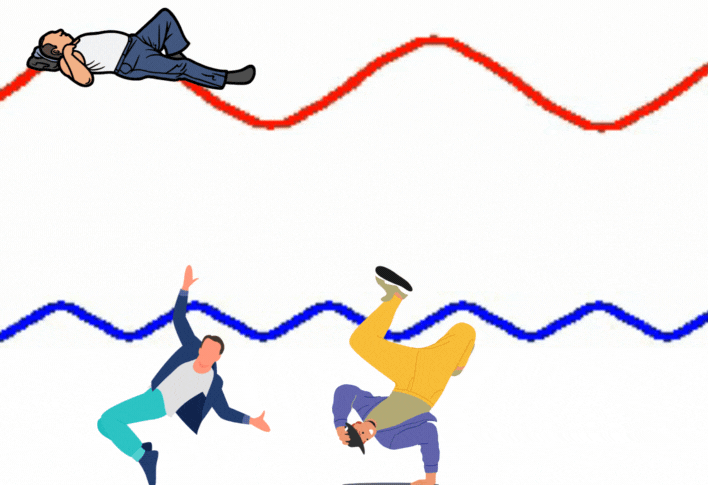
When blue light hits our eyes, our brains spike levels of dopamine. Dopamine is also made when we absorb ultraviolet light along with infrared (IR).3 In Sunlight, infrared is always present, whereas in a lab or tanning bed, UV is often isolated. This is why many believe in a false paradigm of UV causing cancer. UV was never tested under full spectrum Sunlight along with the regenerative IR wavelength. Nature has built the lab for us - and its test subjects smile with glee, stocking up on solar dopamine like a mad shopper before a Texas hurricane of EMF hits home.
What happens when we wear sunscreen and sunglasses that block UV, and expose ourselves to screens that constantly pulse blue waves of light? We gradually deplete our levels of dopamine, which makes us crave more. Since our frontal lobes regenerate dopamine while we sleep4, when we have less, we need to sleep more. As a result we lose even more time. The more dopamine we have, the less sleep we need to regenerate.
If we want to put time back on our side, then we need to get on the side of full spectrum Sunlight during the day along with red light at night. Artificial blue light at night (ALAN) is a robber of our most precious resource - time. Red light at night by default is a zeitgeber (time giver). Even though red light from a flashlight or headlamp is by nature artificial, it isn’t toxic to our cells like blue wavelengths, which creates oxidative stress and can misfold proteins.5
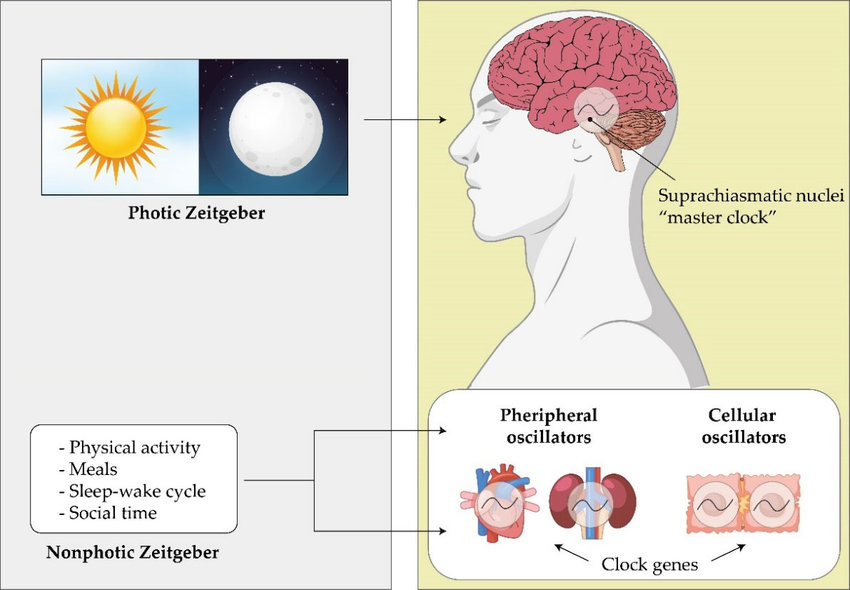
When we gaze longingly into the abyss of our screens, the blue light scatters inside our eyes more than other wavelengths, thus creating a blur. This is also why the sky is blue, since the shorter blue wavelengths scatter more than the red, green, and yellow.
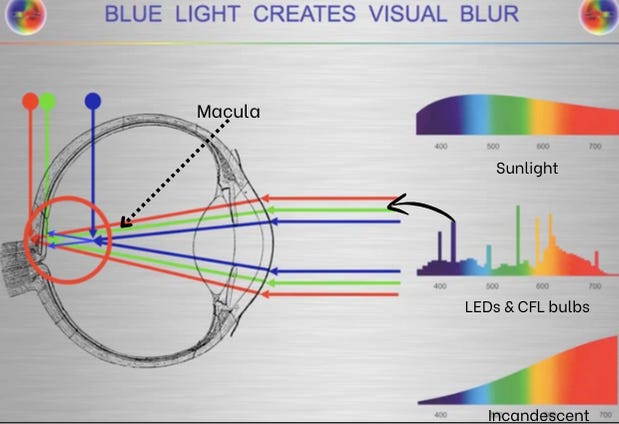
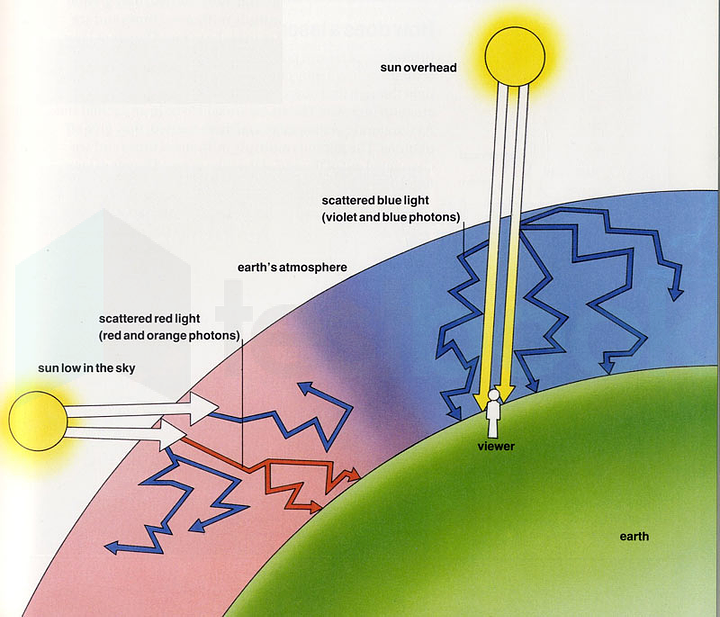
How do we naturally raise our dopamine levels in a UV-poor environment?
Did you know that cold water immersion at 14°C / 57° F has been shown to increase dopamine by 250%?6 Cooling increases electron density.7 This means if we take a cold shower, or drink a glass of cold water, we’re improving our ability to use energy in our bodies by donating electrons to metabolic, immune, and cognitive processes that need them most. Light can only interact with matter when there are electrons present.
When we cool our bodies, we’re also able to absorb more UV, which supplies electricity using our bodies’ DC electric circuit. How do we take full advantage of UV light to create electrons that power our DC circuit of regeneration? By making sure we have DHA in our cells.
All life is guided by photosynthesis through what is known as the photoelectric effect. If we live in a northern climate with less UV present, it’s up to us to use more of the electric part of the photoelectric equation. Maybe this is why Mother Nature made sure that low-UV environments have a plethora of electron-rich cold water, along with cold-water fish loaded with DHA?
Other ways we can maintain our levels of dopamine
If jumping into frigid ice water like Thor and battling fish the size of a legendary sea serpent isn’t your thing, we have good news. We can hold onto our stores of dopamine by not losing it in the first place. The simplest way to do so is by avoiding the invisible snake of blue light at night. By learning how to entrain our circadian rhythm, we can train the king cobra of artificial light not to bite.
There are many modern tools at our disposal, which aren’t “smart” and don’t have to cost us a fortune. As a matter of fact, many of these circadian fitness supporting gadgets were developed in the 1990s and 2000s, so you can find many on ebay or in a viking closet near you.
Step into the Red Light Time Machine
Here are some retro tools Bohdanna and I use, which you may want to grab now, so your grandchildren can thank you later. They may tell all their snot-nosed friends “how weird Granny is” now, but they’ll be writing Norse Lore about you one day once they realize how you were willing to explore old newfoundlands that others in the popular crowd took for granted. They’ll be singing songs of praise, recalling how you raided those sheepish towns like a biohacking berserker:
The day of EMF battle begins
Many of my friends and ElectroHealth RX students only have a cell phone in their bedroom not because they want to get on Instagram at 2am, but because they’ve come to rely on the phone as an alarm clock. As a matter of fact, many of us use our phones not to call, but as a calculator, voice recorder, and camera. Because I (Roman) am a cynic, I think that these “phones” have been developed with such amazing cameras and accessories so that we become dependent on them for doing everything in our lives.
Here’s an alarm clock we use (runs on batteries so we can have the power to our bedroom off at night, reducing dirty electricity while we sleep):
Time for the Sunrise
When I wake up, and it’s still dark out, I check my watch first to see how much time I have until we need to get out on the hill to see the Sun peak over the horizon. I’m not going to check a phone, or a blue-lit oven light, as this will ruin my circadian clock, leading to more inflammation during the day.
Time to make the donuts turn ON the power
Once I know how much time I have to get ready for my morning, I’m off to invade my dark garage, where the circuit breaker sits in the OFF position. I’m still in dark mode, and have a red light headlamp so that I can switch on the power to the rest of the house.
First shot of dopamine
Now I’m off to battle the sea serpent in the cold dark abyss. Once I turn the power on, the only lights that come on are red and amber ones like these:
Seeing the Sunrise, and not the car eyes
Now that I’m all charged up, I’m ready to hit the streets and battle another type of serpent - blue LED street and car lights, which are hundreds of thousands of times over the level of what our eyes can biologically tolerate.8
When it comes to circadian eyewear, there are many options. If you wear glasses during the day for the computer, you want to make sure that they don’t block more than 90% blue light, as you’ll start to secrete melatonin in the absence of blue light, making you tired. This is why we wear computer / daytime glasses that block minimal amounts of blue light from car lights so we don’t fall asleep.
Embrace the moment. Own it - it’s yours.
Now that we’ve arrived at the Sunrise, we don’t snap photos of it. We enjoy it. But if we do drink in the Sunrise with a snapshot, we make sure it’s with a digital camera, that has a memory card. This way none of our pictures are being uploaded to the cloud of stolen identity, and our brains aren’t irradiated with pulse-modulated blue light from a phone.
Unwinding with red so we don’t feel dead
After we’ve plundered the high seas, we come back home to enjoy our evening. Since we don’t have a fire place, we do our best to create the scene with lights our ancestors would have admired. We have red lights everywhere, along with amber.
This is a setup inspired by SaunaSpace, which we’ll install soon:
Reading to dream
The last hour we’re awake, we’re reading a fictional book to prime our subconscious mind so that we can let go of our monkey mind, and all the “should haves” that “could have” gone better that day. We’ve found that if we’re reading anything too suspenseful, or a non-fiction book, we’re still activating an alert, beta brainwave. We want to start descending into alpha, which keeps a slower rhythm, and can also be triggered with meditation. The best way to support this state is reading with red light. Our eyes adjusted to this type of light way more quickly than we had originally thought.
Dreaming in Valhalla
Our next day begins with the way our last night ended. We used to say “we’re going to get up at 5am tomorrow!” and get up at 6am instead. Now we set an alarm for our night at 9:30pm. If we can be in bed or on the couch reading by that time, we’re golden. We’re off to shut the power OFF to our bedroom once again, and crawl into our sleep sanctuary. Another night of fighting the light of the blue serpent has ended, and a feast of melatonin awaits us - in a hall where health warriors dream themselves awake.
We are more powerful than we know.
Roman & Bohdanna
Join our community of EMF health warriors - take our ElectroHealth Rx Course
You can also support us at The Power Couple Bookshop - dedicated to making us relearn from our ancestors.
Additional Resources:
If you decide to purchase any of the products from Ra Optics or Sauna Space, you can use the discount code POWER for an additional 10% off.
How pale people of Northern European descent can build a solar EMF callus:
https://www.space.com/blue-stars
I remember these days, which seem like another lifetime of light years ago:
Bertazzo A, Favretto D, Costa CV, Allegri G, Traldi P. Effects of ultraviolet irradiation on melanogenesis from tyrosine, Dopa and dopamine: a matrix-assisted laser desorption/ionization mass spectrometric study. Rapid Commun Mass Spectrom. 2000;14(19):1862-8. doi: 10.1002/1097-0231(20001015)14:19<1862::AID-RCM87>3.0.CO;2-U. PMID: 11006597.
https://romanshapoval.substack.com/i/144313357/does-blue-light-cause-parkinsons
Srámek P, Simecková M, Janský L, Savlíková J, Vybíral S. Human physiological responses to immersion into water of different temperatures. Eur J Appl Physiol. 2000 Mar;81(5):436-42. doi: 10.1007/s004210050065. PMID: 10751106.
https://jackkruse.com/time-6-time-and-dopamine/





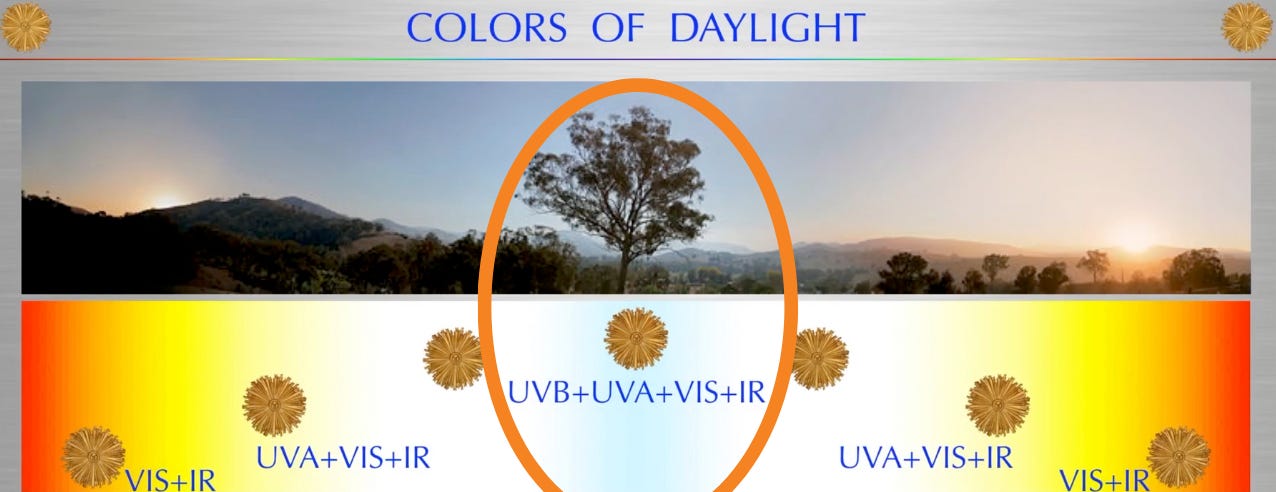







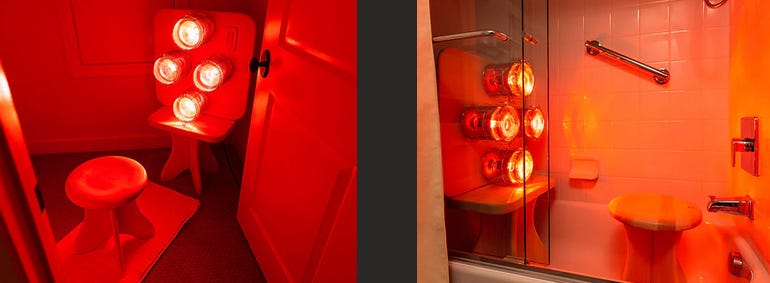


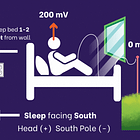

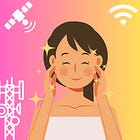

i'm thinking how I naturally like full spectrum and warm lights - and firelight from the wood-burning stove.
Bought battery-powered digital alarm clocks at Walmart--chosen because I did not want the read-out light on all night long. Have to press a button on top to get read out--it stays on for a few seconds, then automatically shuts off.